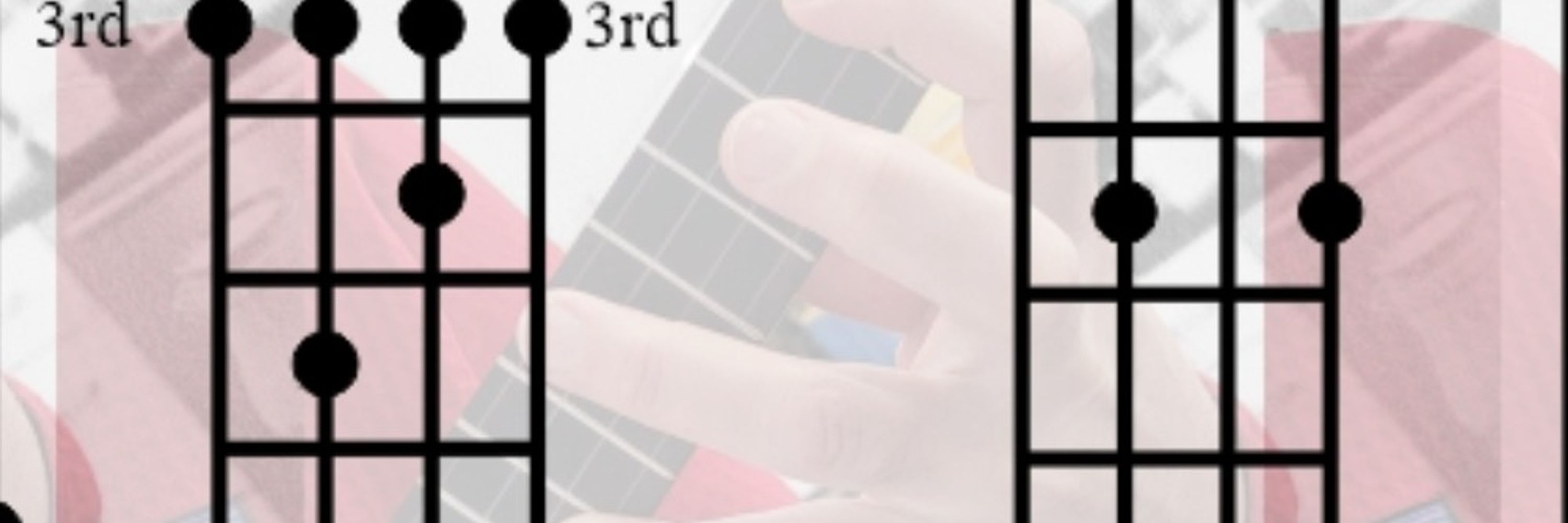
If you're looking for sensible chords, you're probably following the wrong account. If you appreciate a little bit (or a lot) of ludicrousness in your life & ukulele playing, you've definitely come to the right place.
As time allows, I'm working on a ukulele jazz chord dictionary.
Strum on!
Chord of the Day is on break for the next week or so. I have a deadline for a Cumbia Christmas album I'm recording coming up. If you're curious about what madness I'm up to, dig it here:
youtu.be/ElMBF9jh0wk
youtu.be/HvuIY8cenUc
youtu.be/AkqZet5QxB0

Chord of the Day is on break for the next week or so. I have a deadline for a Cumbia Christmas album I'm recording coming up. If you're curious about what madness I'm up to, dig it here:
youtu.be/ElMBF9jh0wk
youtu.be/HvuIY8cenUc
youtu.be/AkqZet5QxB0
This is a groovy 2-5 (provided you're comfortable with barre chords, hint: they're worth it, but I digress...) that you can just loop indefinitely. Our 1 chord doesn't resolve very nicely, leaving you wanting more. To me it has a questioning feeling.
Groove on!

This is a groovy 2-5 (provided you're comfortable with barre chords, hint: they're worth it, but I digress...) that you can just loop indefinitely. Our 1 chord doesn't resolve very nicely, leaving you wanting more. To me it has a questioning feeling.
Groove on!
youtu.be/4johQSTVdrc

youtu.be/4johQSTVdrc
Strum on!
Root:
youtu.be/JNfLPi2SeLw
2-5:
youtu.be/p8lQMfXSgz0

Strum on!
Root:
youtu.be/JNfLPi2SeLw
2-5:
youtu.be/p8lQMfXSgz0
Groove on!
youtu.be/SetyAeMVP-o

Groove on!
youtu.be/SetyAeMVP-o
www.texasfiddle.org

www.texasfiddle.org
This 2-5 is a fancy derivative of one of my favourite 2-5s (Gm7 3535 to C9 3435). Our 5-1 hinges on the E & G notes on strings 3 & 2. Our 1 chord has a little resolution, but that #11 really leaves it drifting, which I dig.
youtu.be/8ZQH2lF1A8s

This 2-5 is a fancy derivative of one of my favourite 2-5s (Gm7 3535 to C9 3435). Our 5-1 hinges on the E & G notes on strings 3 & 2. Our 1 chord has a little resolution, but that #11 really leaves it drifting, which I dig.
youtu.be/8ZQH2lF1A8s
youtu.be/JNfLPi2SeLw

youtu.be/JNfLPi2SeLw
Strum on!
Root:
youtu.be/SetyAeMVP-o
2-5:
youtu.be/3QYvBT6ducY

Strum on!
Root:
youtu.be/SetyAeMVP-o
2-5:
youtu.be/3QYvBT6ducY
Groove on!
youtu.be/MxSlCQnm7NY

Groove on!
youtu.be/MxSlCQnm7NY
As you can see, I wasn't kidding about dead easy. For simplicity, I suggested fingers 1 & 2 for our G6, but it might be more comfortable/familiar to use 2 & 3. This is because if you combine our 2 & 5 chords you have a G7, which should be a familiar shape.
Groove on!

As you can see, I wasn't kidding about dead easy. For simplicity, I suggested fingers 1 & 2 for our G6, but it might be more comfortable/familiar to use 2 & 3. This is because if you combine our 2 & 5 chords you have a G7, which should be a familiar shape.
Groove on!
youtu.be/SetyAeMVP-o

youtu.be/SetyAeMVP-o
Groove on!
Root:
youtu.be/MxSlCQnm7NY
2-5:
youtu.be/lblrdpFiEfM

Groove on!
Root:
youtu.be/MxSlCQnm7NY
2-5:
youtu.be/lblrdpFiEfM
Groove on!
youtu.be/7lBTUhqjlMs

Groove on!
youtu.be/7lBTUhqjlMs
This Am7 shape is a great way to play the more common 2433 shape with the root. It slides nicely into our D7, which flows beautifully into our 1 chord.
Play on!
youtu.be/t9VddcNFnlg

This Am7 shape is a great way to play the more common 2433 shape with the root. It slides nicely into our D7, which flows beautifully into our 1 chord.
Play on!
youtu.be/t9VddcNFnlg

Groove on!
Root:
youtu.be/7lBTUhqjlMs
Dig it in a 2-5:
youtu.be/PAEmZ6tfQVA

Groove on!
Root:
youtu.be/7lBTUhqjlMs
Dig it in a 2-5:
youtu.be/PAEmZ6tfQVA
Groove on!
youtu.be/0UtF9OMJ2lI

Groove on!
youtu.be/0UtF9OMJ2lI
I love how this progression shares 2 chord tones with the next chord. To make the transition from our 2 to 5 chord easier, try rotating the thumb side of your hand towards the neck. From there, fingers 1 & 2 remain along their respective frets, but switch strings.
1/

I love how this progression shares 2 chord tones with the next chord. To make the transition from our 2 to 5 chord easier, try rotating the thumb side of your hand towards the neck. From there, fingers 1 & 2 remain along their respective frets, but switch strings.
1/
youtu.be/7lBTUhqjlMs

youtu.be/7lBTUhqjlMs
Share and enjoy!
Share and enjoy!
Groove on!
Dig it with a Root:
youtu.be/0UtF9OMJ2lI
2-5:
youtu.be/FKK5ASIpTJg

Groove on!
Dig it with a Root:
youtu.be/0UtF9OMJ2lI
2-5:
youtu.be/FKK5ASIpTJg
Groove on!
youtu.be/-kngT6JGVXk

Groove on!
youtu.be/-kngT6JGVXk
We can substitute our 6-2-5-1 for bars 11 & 12 again. We'll play our 1 & 6 chords for 2 beats each in bar 11, our 2 & 5 chords for 2 beats each in bar 12, & our 1 chord will be bar 1 at the top of the form.
1/

We can substitute our 6-2-5-1 for bars 11 & 12 again. We'll play our 1 & 6 chords for 2 beats each in bar 11, our 2 & 5 chords for 2 beats each in bar 12, & our 1 chord will be bar 1 at the top of the form.
1/

